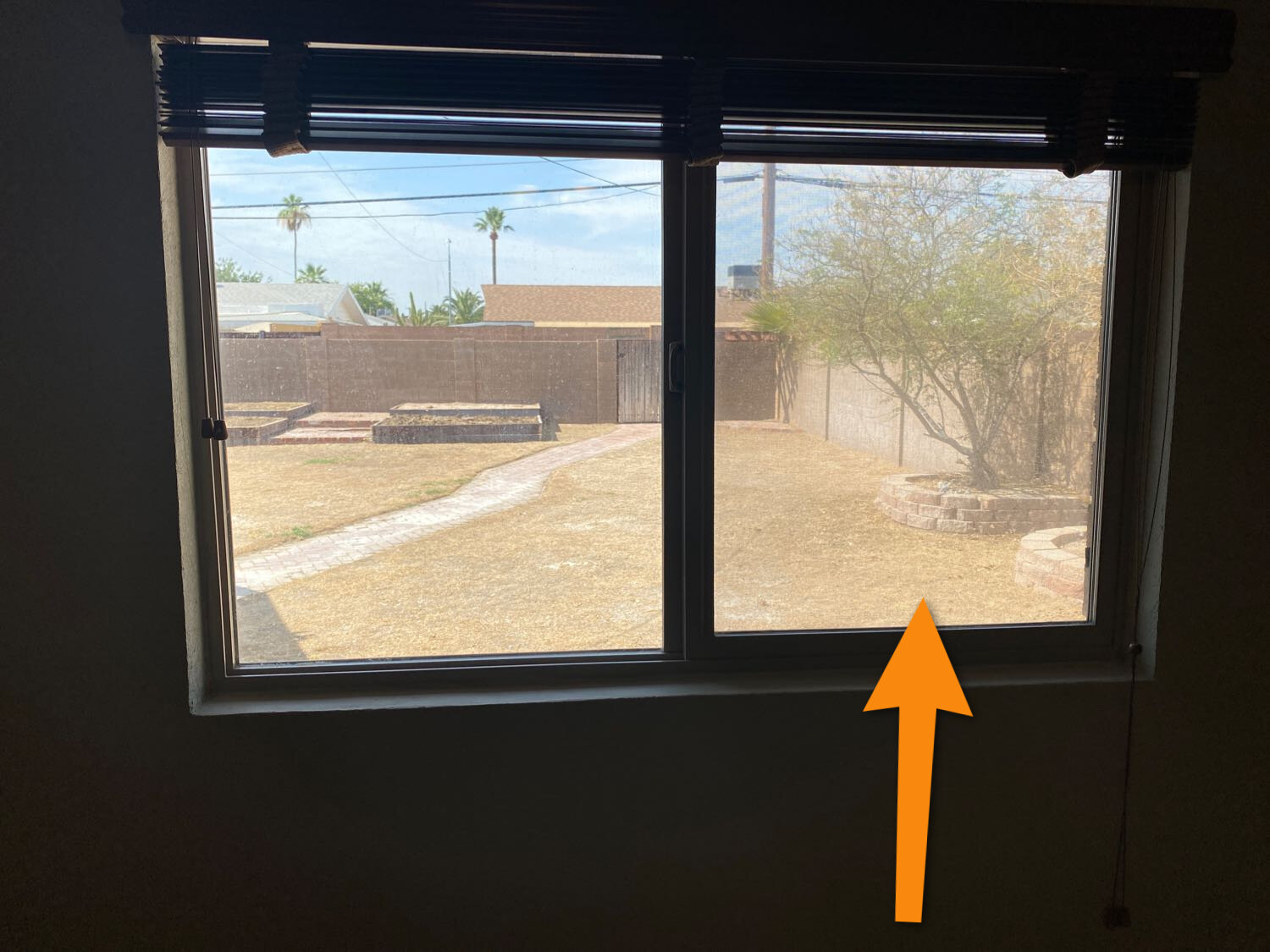How do I fix a broken window seal or fogged window?
Why did your window fog up, and what you need to do to see things clearly again?
This is an example of a fogged window found in a Phoenix home inspection. The right window pane is fogged and the left is not.
The problem with your window most likely a broken window seal. Today’s windows have two or three panes of glass separated by air space and sealed around the edges with a flexible elastic sealant to keep humidity out, unlike single panes windows of the past. These insulated glass unit (IGU) windows are known as double-pane, multipaned, or thermopane. The gas found between the panes of glass contains an inert gas, such as argon or krypton. The gas helps reduce the transfer of outdoor heat or cold through the window.
The most common sign of a broken window seal is visible condensation.
The failure of the flexible seal can cause humid air to enter between the panes and cause the fog you are seeing. The fog may lessen or worsen depending on weather and humidity conditions. Now that seal is broken, any inert gas has escaped, and the insulating factor has diminished.
This is an example of a fogged window found in a Phoenix home inspection. There is heavy condensation observed in this window.
Windows that receive many hours of sunlight a day are at increased risk of failure of the window seals.
With the hot sun shining on the window, the glass expands and puts pressure on the seal, as the temperature cools overnight the glass contracts. This repeated expansion and contraction is known as “solar pumping,” causes the window seals to harden and fail. As a result, windows on the west and south sides of a house receive more sun usually fail before the window on the east and north sides of a home.
There are other reasons for window seals to fail.
The window seal can fail if anything damages the sealant material. The cause of this can be:
Poor window installation causing pressure on the glass.
Pressure on the glass when a house settles.
High winds
chemicals that can dissolve the sealant material
Replacing the IGU (insulated glass unit) is the best way to ensure a clear view.
Removing the IGU (insulated glass unit) from the sash is best for a contractor who understands how a window comes apart. Once removed, a replacement ordered, a new IGU fitted into the sash, the sash reassembled, and put back into the window.
See if the window is under warranty. If so, call the manufacturer to fix the broken window seal.
Depending on the quality and manufacturer, the guarantee for window seals usually ranges from three to 15 years. If the window fails in that time, the manufacturer often provides a replacement at no cost. With this scenario, the homeowner is on the hook for paying the contractor the labor to replace the window.
Replacing the entire window might be the only option if it is old.
If the window is in good shape, just replacing the IGU is an excellent option. However, if the window is warped, challenging to open, or the hardware is difficult to use, it might just be better to replace the entire window. Saving on the labor cost is possible if you’re an adventurous DIYer with basic carpentry skills.
Using a few precautions can help prevent broken window seals.
A little care can go a long way with the longevity of your window seals.
Inspect your windows in the fall before it starts to get cold. Caulk any gaps between the panes and the sash for additional protection.
Don’t add any tint to your windows without checking the manufacturer’s warranty. Using a window tint can void the warranty in some cases.
Keep away from using a pressure washer to clean the outside of your windows. Water can work its way into the seals and damage them.
Keep chemical window stripper away from the window sash near the panes.


